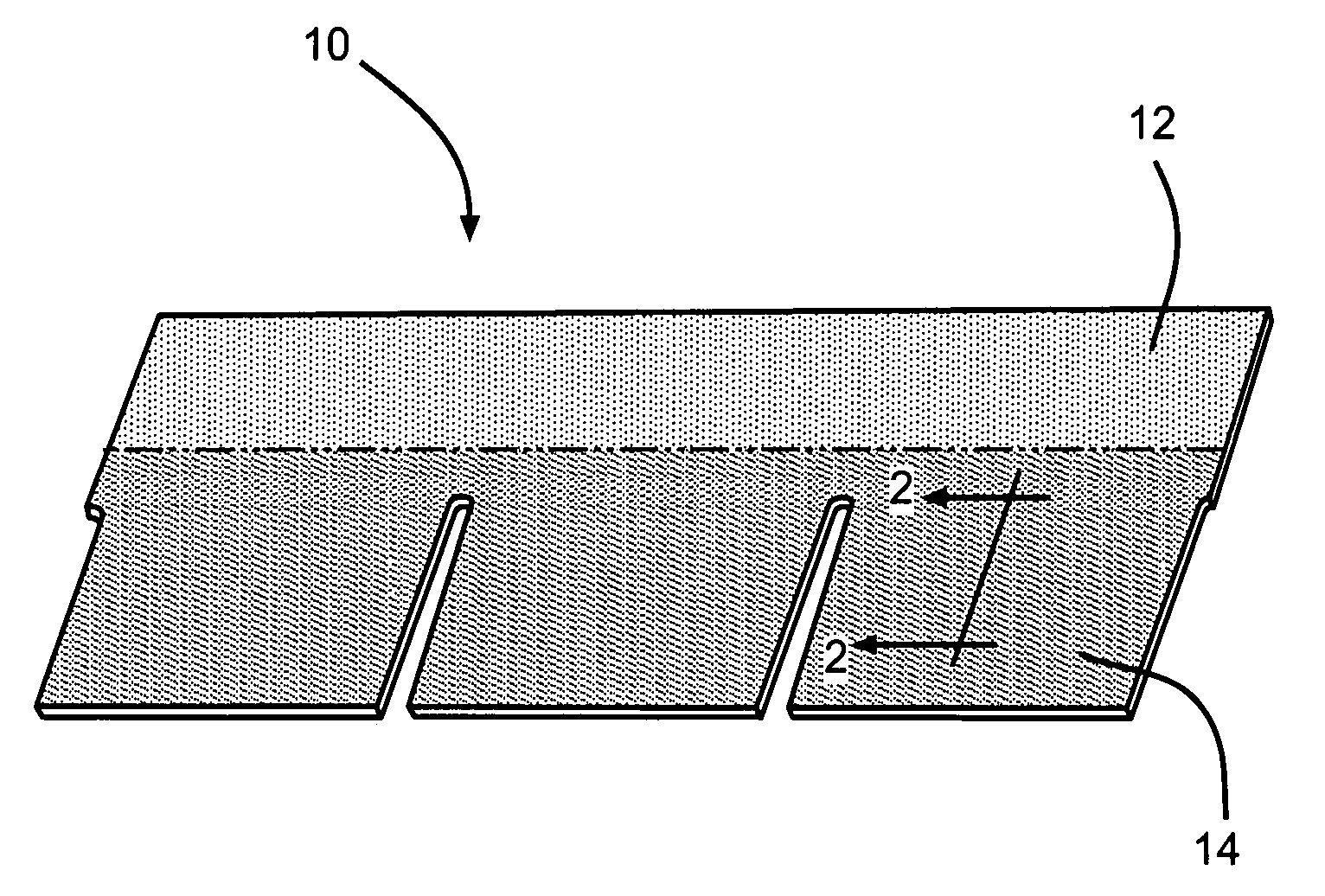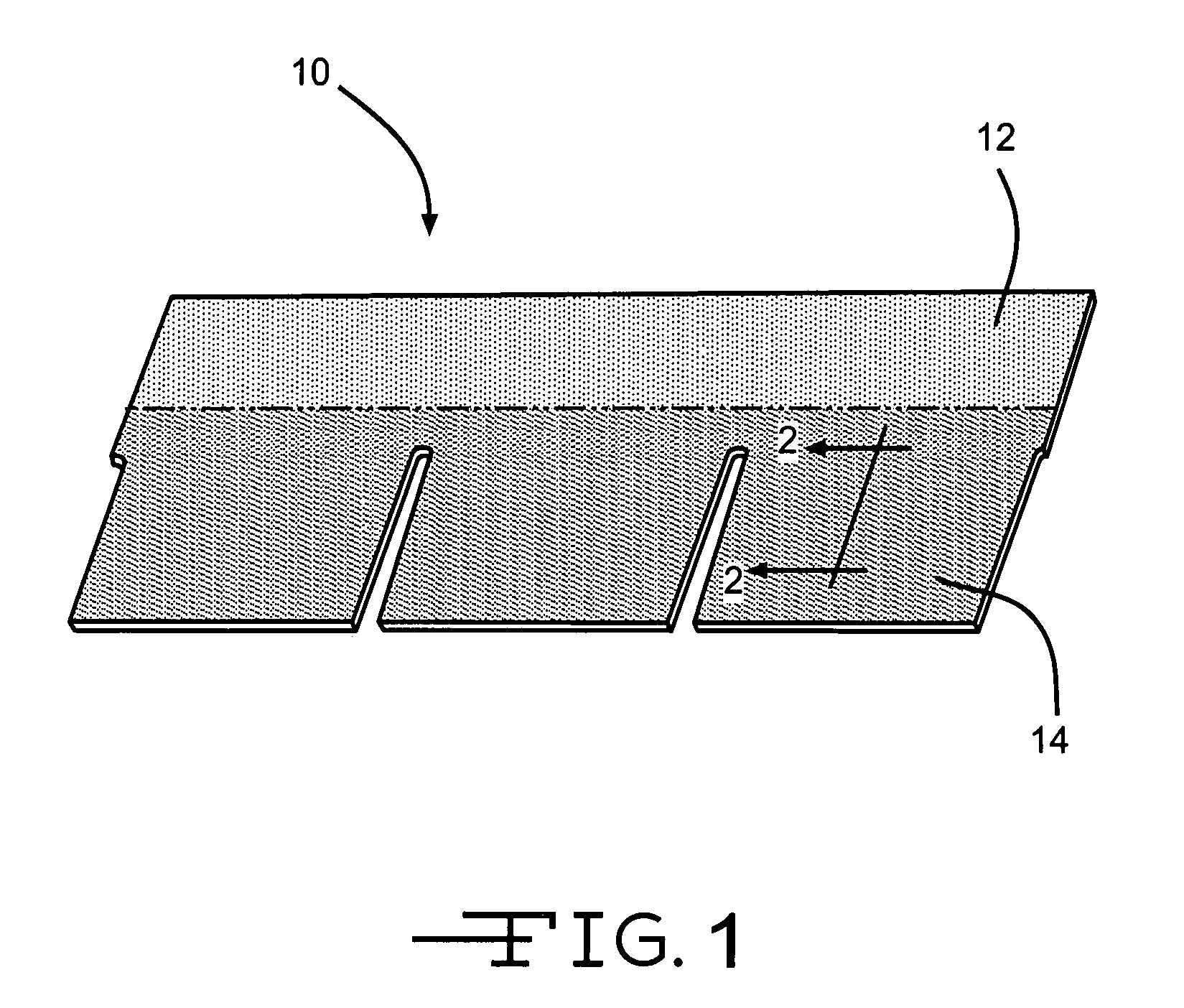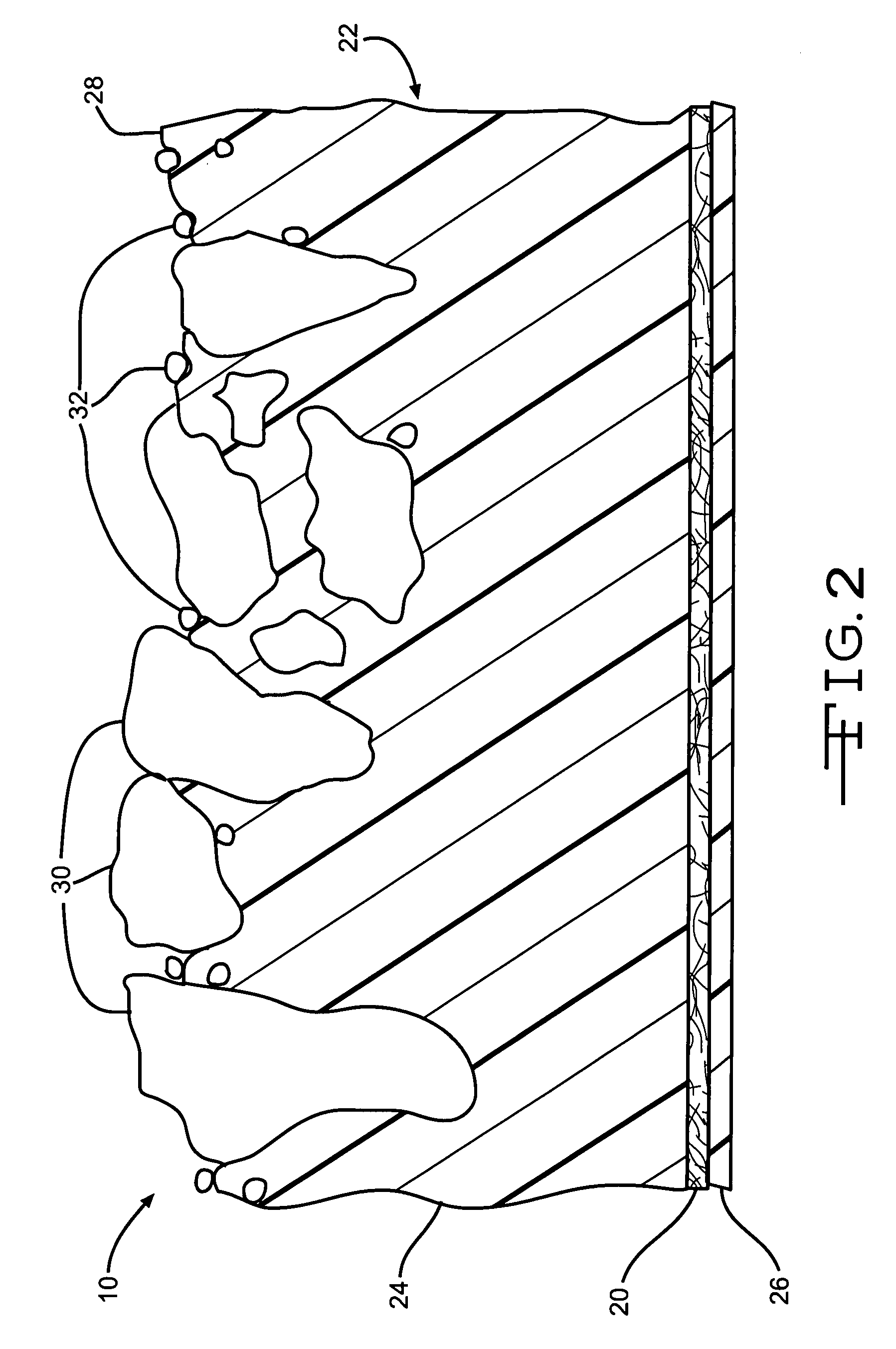Roofing shingle having agglomerated microorganism resistant granules
a technology of agglomerated microorganisms and roofing shingles, which is applied in the field of roofing materials, can solve the problems of discoloration of exposed roofing material surfaces, dark streaks that may cover a large amount of roofs, and discoloration is particularly noticeable and unsightly on white or light-colored roofing materials
- Summary
- Abstract
- Description
- Claims
- Application Information
AI Technical Summary
Problems solved by technology
Method used
Image
Examples
Embodiment Construction
[0015]Referring now to the drawings, FIG. 1 shows a microorganism resistant roofing shingle, indicated generally at 10, according to the invention. While the illustration shows a strip shingle, one skilled in the art appreciates the present invention applies to a variety of roofing products, including laminate shingles, rolled roofing or other products.
[0016]The illustrated shingle 10 includes a headlap region 12 and a prime region 14. The headlap region 12 of the shingle 10 is the portion of the shingle 10 that is covered by adjacent shingles when the shingle 10 is installed upon a roof. The prime region 14 of the shingle 10 is the portion of the shingle 10 that remains exposed when the shingle 10 is installed upon a roof. The prime region 14 is the portion of the shingle 10 where growth of microorganisms, such as for example fungi and algae, may occur.
[0017]The shingle 10 may have any suitable dimensions. The shingle 10 may also be divided between the headlap region 12 and the pri...
PUM
| Property | Measurement | Unit |
|---|---|---|
| specific surface area | aaaaa | aaaaa |
| density | aaaaa | aaaaa |
| height | aaaaa | aaaaa |
Abstract
Description
Claims
Application Information
 Login to View More
Login to View More - R&D
- Intellectual Property
- Life Sciences
- Materials
- Tech Scout
- Unparalleled Data Quality
- Higher Quality Content
- 60% Fewer Hallucinations
Browse by: Latest US Patents, China's latest patents, Technical Efficacy Thesaurus, Application Domain, Technology Topic, Popular Technical Reports.
© 2025 PatSnap. All rights reserved.Legal|Privacy policy|Modern Slavery Act Transparency Statement|Sitemap|About US| Contact US: help@patsnap.com



